
Fort Washington
Congress authorized a fort on the Potomac in reaction to deteriorating relations with Britain. Fort Warburton was completed in 1809. When the British advanced on Washington DC in August 1814, however, the fort was bypassed, and the garrison destroyed the fort. Pierre L'Enfant was charged with replacing the fort only a few days afterward, and Fort Washington was finally completed in 1824 under the direction of Lt. Col. Walker Armistead, whose son would be killed at Gettysburg. The fort was designed to block a naval advance up the river on the nation's capital. At the start of the Civil War, Fort Washington was the capital's only fort, and the new rifled artillery made it vulnerable. The earthen Fort Foote was built further upstream in addition to a ring of new earthen forts surrounding the district.

The fort was built on high ground overlooking the river, with steep terrain surrounding the fort, making an attack by land difficult. Closer to the river, a V-shaped outwork added more guns trained on the river.
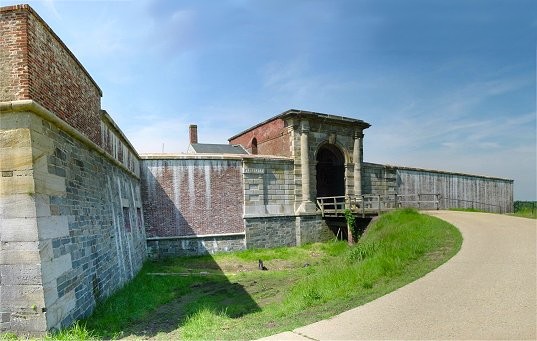 |
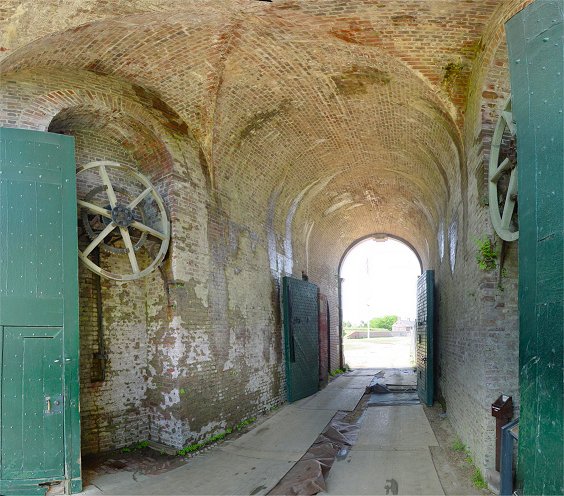 |
Thirteen guns atop the walls protected the main entrance along with two guns in casemates within the walls. Two gates blocked the entrance, and in the 1840s, a drawbridge was added, the mechanism of which can be seen in the picture on the right.
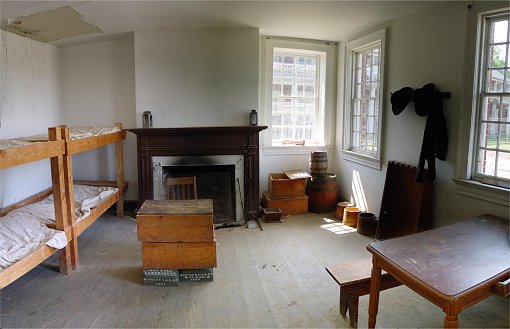
Guard Office-Post Number 1
Off duty guards of the main gate would spend time in the nearby Guard Post Number 1.

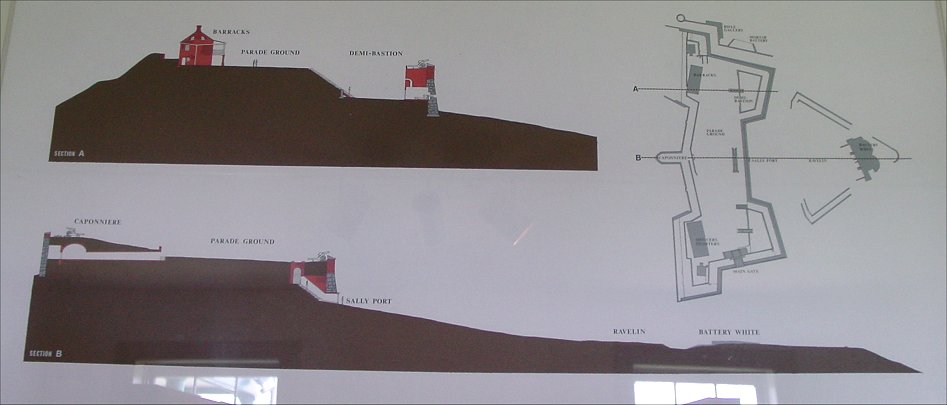
The model, maps, and cross-section in the museum help make the fort more understandable. On the land face, the wall is part stone and part earth. A caponier projecting out could give sweeping fire along the weaker earthen section. On the river side, the two demi, or half, bastions, have an upper section which is level with the parade ground. The demi-bastions also have a lower level with casemated guns.
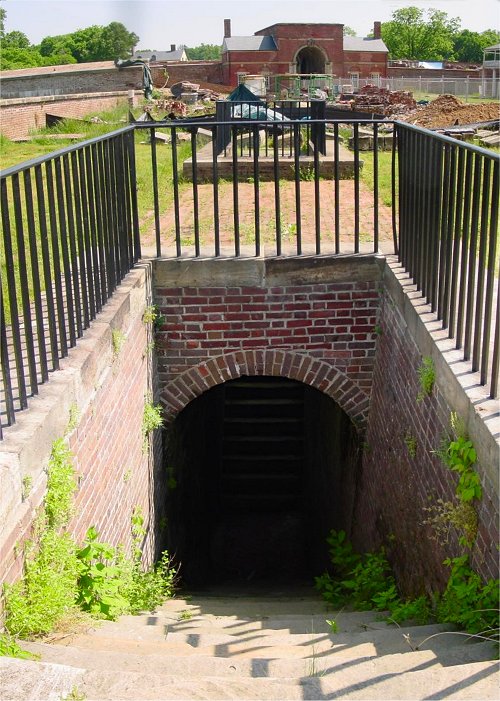
Stairs Down to Sallyport
With the main gate visible in the background, you can see the two sets of stairs in the center of the fort. This is the exit to the Sallyport, prominent on the river face of the fort.

This is the view from further into the fort, from a demi-bastion. The walls would have been lined with guns aimed at the river. The sallyport is visible on the front face as well as the more modern Battery White on the far left. Scrolling to the right, you can see the Main Gate, Officers' Quarters, some fencing around the stairs to the sallyport, the caponier, and the barracks. Below the barracks are stairs descending to the casemated guns on the lower level of the demi-bastion. On the far right is a raised area which could provide flanking fire along the sides of the fort. Let's take a look at the view from there!

On the left is the demi-bastion that the last panorama was taken from, specifically from near the yellow sign. The raised area where this pan was taken surrounds a magazine. From here, flanking fire along a wall of the demi-bastion was possible as well as along the land face of the fort, parallel to the rear of the barracks.
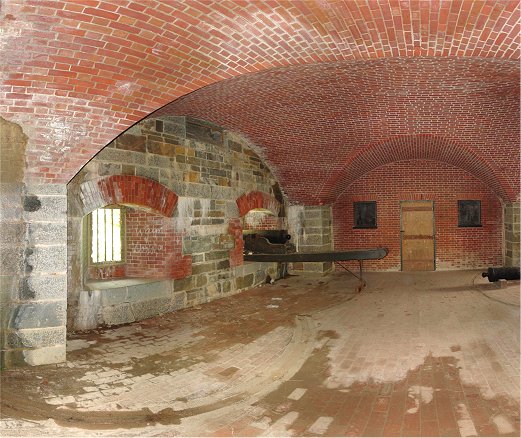
Caponier
This is inside the caponier, the underground projection on the land face. Guns on either side could enfilade the ground in front of the walls.

Inland Face
Part of the earthen portion of the inland facing walls is visible as the grown-up area beneath the flag. Fire from the caponier on the far left and from behind the prominent brick parapet in the left-center of the panorama could dominate the land face. Let's walk down the ramparts on the far left and see what we can see!

The brick wall on the far left was where the previous pan was taken.
From here, we can see from inside the fort this time, the walls which flank the main gate. The brick arch must be an entrance to the casemates. During my visit, the fort was under renovation, and fences and tarps were commonplace.
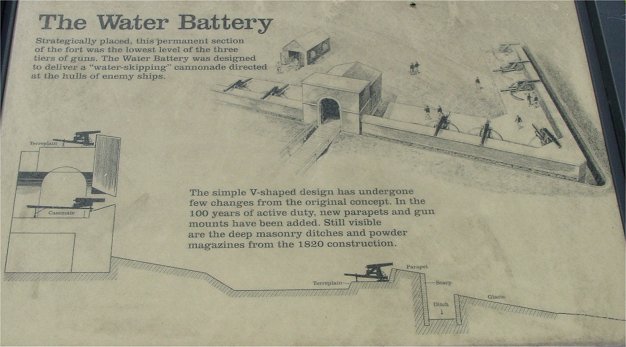
This park service sign explains the ravelin, or V-shaped battery nearer the river. In the late 1800s and early 1900s, Battery White was built at the tip of the V with 2 rapid fire 4 inch guns covering a minefield in the river.

Note the stonework and magazine.

From Battery White

Battery Decatur
| Technological change in the late 1800s made Fort Washington obsolete. Fortifications of the Endicott system were erected nearby the old fort in the early 1900s. This featured large caliber disappearing guns, small caliber rapid fire guns, searchlights, and mines in the river. On the right of the panorama is Battery Decatur which mounted two 10 inch guns. The recoil pushed the guns back under cover of concrete. Ammunition was stored within the fort's lower rooms. | 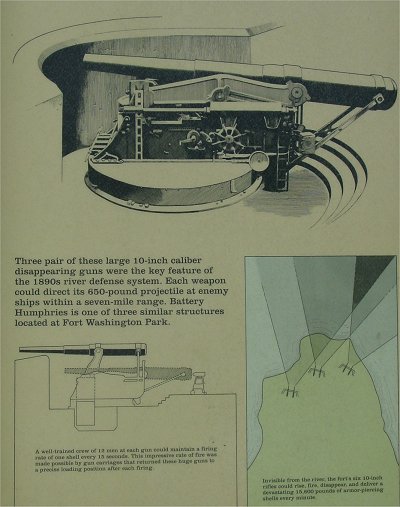 |

Battery Meigs - A Mortar Battery
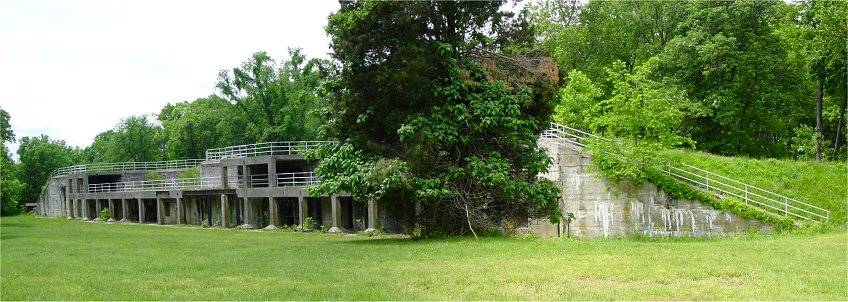
Battery Humphries

Gym/PX and Duplex Quarters
All photos and text copyright 2006 by John Hamill.
Back to John's Military History Page